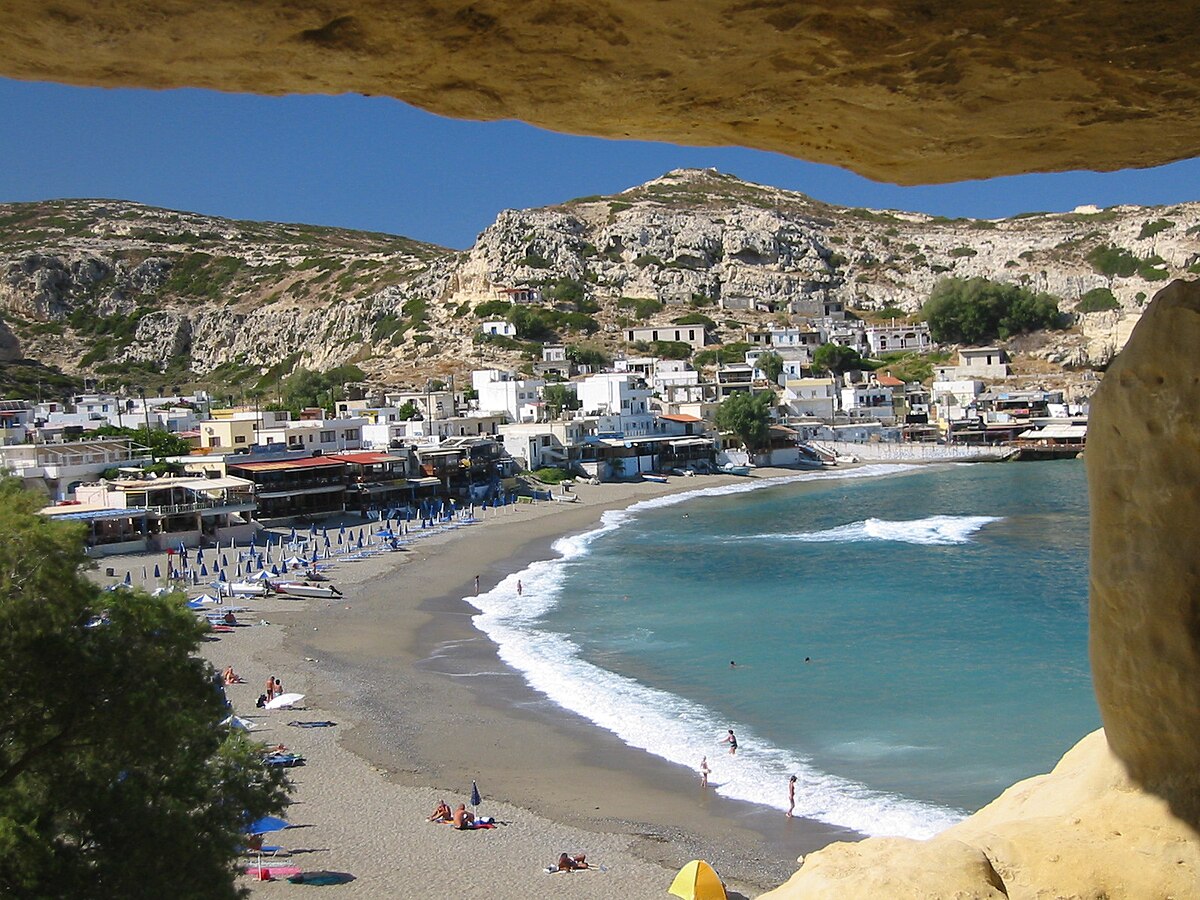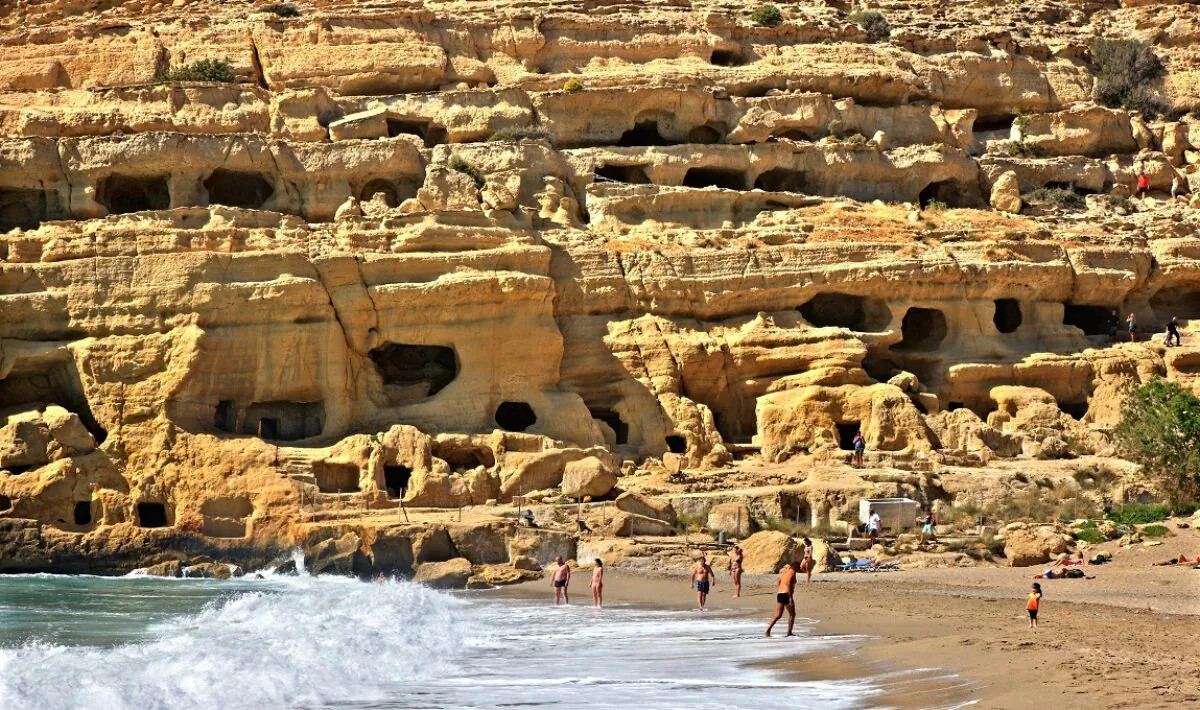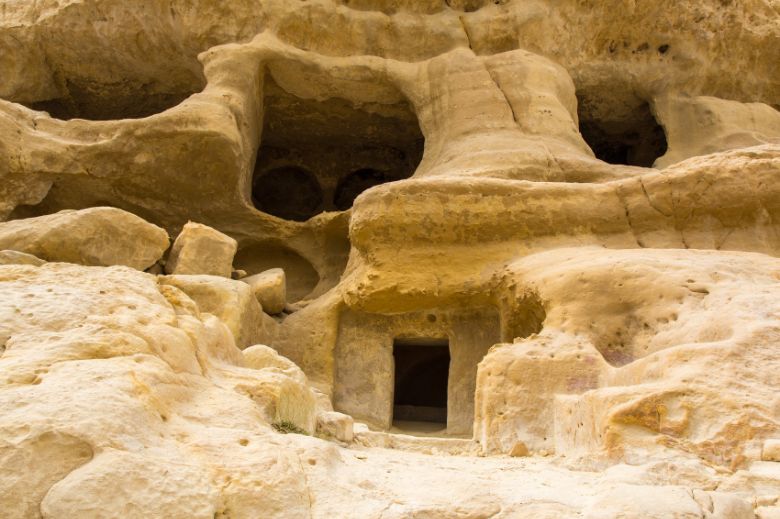Matala - the Hippie City of Crete
Matala is a historic and scenic village on the south coast of Crete that offers a compelling mix of ancient history, archeological sites, and natural beauty, making it a captivating destination for tourists.
Historically, Matala served as the ancient port of the powerful Minoan palace of Phaistos during the Minoan era (roughly 2700–1450 BC). It was later occupied by the Gortynians around 220 BC and became the Roman port of Gortys, the Roman-era capital of Crete. One of the village's most striking features is the network of artificial caves carved into the cliffs overlooking Matala Bay, originally created in the Neolithic Age. These caves are believed to have been used as prehistoric dwellings and places of worship, and during the Roman period, some were used as tombs. In early Christianity, some caves also functioned as catacombs during periods of persecution. The cliffs and caves hold archaeological significance and have been protected by the Greek Archaeological Service, although one can visit them during daytime.
In the 1960s and 70s, Matala gained international fame as a hippie heaven. The caves attracted a community of free spirits, including some notable musicians, who lived there and contributed to the village's bohemian atmosphere. Today, Matala celebrates this unique past through the annual Matala Beach Festival, held every June, which honours the music and culture of the 60s and 70s.
Tourists visiting Matala can enjoy its stunning sandy beach that curves around the picturesque bay, with the turquoise waters of the Mediterranean inviting for swimming and relaxation. The caves themselves are a popular attraction, inviting exploration and offering a tangible connection to thousands of years of history. Visitors can visit the Tower (Koules) or Fortress on Kastri hill, an ancient fortification with impressive views, and the rock formation called "Theosyni" that offers panoramic views over the Messara Bay along with a natural marine cave known as "Kouroupi." Nearby is the enchanting "Red Sand Beach" or "Kokkini Ammos", known for its distinctive red sand and a destination for the adventurous.
Matala also holds mythical significance as the place where Zeus, in the form of a white bull, got on land with the princess Europa on his back, adding a layer of legend to its rich cultural fabric.
In summary, Matala is a fascinating destination that blends ancient archaeological wonders, mythological heritage, natural beauty, and a vibrant countercultural history, offering tourists an immersive and memorable experience. Matala is about 2 hours drive from Halases Panorama Villa - during the trip you will experience stunning sceneries, and you'll be guided through beautiful villages like Spili and along ancient remains like the Late Minoan Cemetery of Armeni. All together this would make for a fantastic day out, or even stay overnight in Matala to experience it's evening and night-life!



